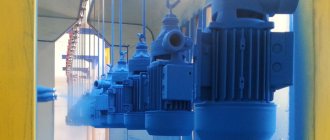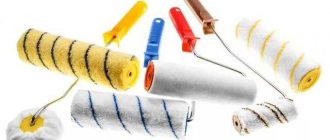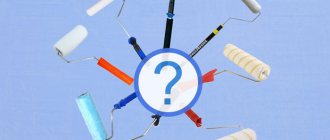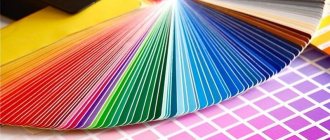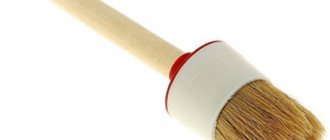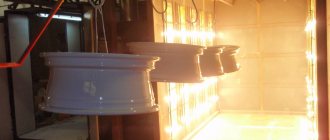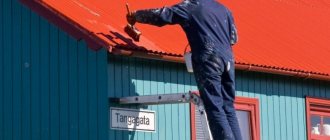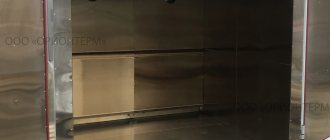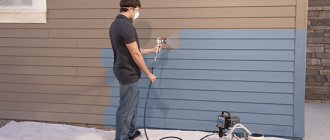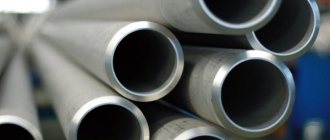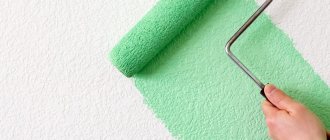From compressed air | 07/25/2017
Powder painting is a productive and effective method of applying weather-resistant protective coatings to various metal surfaces. For this purpose, semi-professional and professional spray systems are used. An indispensable part of each of them is a powder coating gun.
Operating principle and required equipment
The operating principle of a powder coating spray gun is the same for any type and size of device. Painting work takes place as follows:
- The paint powder is loaded into a special compartment.
- Near the base that will be painted, an accumulation of charged particles of colored powder is made.
- The object that is going to be painted is grounded, and particles begin to be attracted to the dye.
The operating principle of a powder coating spray gun is the same for any type and size of device.
Powder gun design
A powder coating gun sprays thanks to the parts it consists of. Thus, the following elements are included in the design of the equipment:
- Air channel;
- The channel through which the powder is supplied;
- Grounded area;
- The base where the powder mixture is charged;
- Air-powder mixture;
- A nozzle with which the dye is sprayed onto the base.
A powder coating gun sprays thanks to the parts it consists of.
Types of powder coating guns
The powder composition can be used by immersion or spray method. The first type is difficult to implement, for this reason it is used only in production.
The second option uses a powder paint sprayer; you can do the painting yourself. Based on the principle of operation, there are several types of pistol equipment.
The powder composition can be used by immersion or spray method.
Electrostatic
It is considered a leader in the construction market among similar devices. The reason is that it is easy to maintain; thin layers are made, which helps save coloring matter and fits any surface in shape. You can carry out work quickly, because loading and changing attachments is simple.
When working with this equipment, you do not need to heat the base in advance, but the price of the gun is high, for this reason not everyone can afford to purchase it.
You can carry out work quickly, because loading and changing attachments is simple.
Tribostatic
The tribostatic powder coating spray gun does not include the conventional type of powder particle generator. The elements are charged by rubbing them against each other. This makes it difficult to get the required charge level.
The charging of particles depends on the humidity level, the composition settles at an excessively fast pace, and a decrease in charge occurs on any type of base.
The tribostatic powder coating spray gun does not include the conventional type of powder particle generator.
Fluidized
Such devices are distinguished by the ability to make many layers of paint and varnish material. This helps to easily set the required coating thickness, the average value of which is 250 microns. Using the operating principle used, the painter can easily monitor the resulting paint thickness at any stage.
Preparing the base when using a fluidized spray gun is reduced to a small number of steps, which reduces the cost of money. But there are also disadvantages to choosing this device:
- Only bases that are simple in shape can be coated with a coloring composition;
- It is necessary to warm up the part before painting, and also dry the surface after;
- The consumption of paint and varnish material will be high when compared with the same electric sprayer;
- You will need to use metal that is resistant to high temperatures.
Such devices are distinguished by the ability to make many layers of paint and varnish material.
The essence of the technique
Powder paint is sprayed onto a clean metal surface. During spraying, the particles receive an electrical charge from an external source or are electrified by friction. Thanks to the electric field, the particles are directed towards the metal, which has the opposite charge. Particles that do not settle are collected in the spray booth and can be used for repainting. The painted part is then sent to a polymerization chamber.
Scheme for applying a conversion sublayer of powder painting
By forming a surface layer of powder paint, a monolithic, high-quality structure is created that protects the base material. The coating is formed by heating the painted layer to a melting state. Further surface finishing involves hardening (for thermosetting materials) or cooling (for thermally plastic materials). The result of the treatment is the formation of a hard surface film.
Read more about how to do powder coating yourself.
Safety rules at work
Powder dyes are not classified as hazardous substances. However, there are elements that require knowledge of safety rules when using compounds. These include epoxy resins, cadmium, allergens and elements used to cure the layer. For this reason, before painting work, you should carefully read the safety rules so that the master does not suffer health problems:
- Before pressing the start button on the spray gun, you need to check the device in order to identify faults if any and eliminate them;
- You can only paint in a room where there is a good level of ventilation, at least the windows are open so that there is access to fresh air;
- In the room where the powder composition will be applied, the grounding is first checked;
- High temperatures can lead to fire of the painted layer; for this reason, painting near open sources of fire is not allowed;
- The master must work only in special protective clothing. So you need rubber or cotton gloves, a respirator, and safety glasses. We also wear protective clothing designed for protection during painting.
The master must work only in special protective clothing.
Polymerization
The use of an oven for polymerization cannot be ruled out, because the paint and varnish material simply will not be able to adhere to metal parts.
The stove is the most expensive piece of equipment on the entire list, but you don’t have to buy it; you can easily make an analogue yourself if you have the right tools and suitable materials.
How to make a powder spray gun
On sale, as described earlier, there are several types of ready-made spray guns that can apply powder paint. But their cost is rather high; for this reason, for a one-time coating of a surface with a composition, the expense is often impractical.
Moreover, it is possible to make a pistol yourself; it won’t take much time to get rare parts. You can do it in ten minutes. The device is convenient, inexpensive and easy to use.
So, according to the drawing, you should perform the following steps:
- You will need a regular 1.5 liter plastic bottle, you need to wash it and dry it well.
- One third of the bottle is filled with coloring powder; the bottle must be closed with a metal stopper.
- Small holes are made in the metal plug; they try to make the maximum number of holes so that the composition is sprayed better.
- Excess particles that appeared after creating holes on the surface are removed from the cork.
- A positive wire taken from a high-voltage source is connected to the made cover.
Accordingly, a converter will be required to be able to withstand a voltage of 25,000 volts with a constant flow. Similar options are found in electric shockers, lighters for gas stoves, boilers and speakers. Their operation can be provided by batteries or accumulators, converting 3-6 volts into the required 25 kV.
Using high voltage devices is dangerous and requires caution. It is advisable that the assembly of this device be carried out by a specialist.
It is possible to make a gun yourself, it won’t take much time and you won’t need to get rare parts.
A few examples of paints
As an example, we can cite two Turkish-made spraying installations from Promaks - CM-10 and 2CM-10.
The PROMAKS CM10 manual spraying installation allows you to use a wide range of paints and varnishes, including metallic and antique. It is also possible to paint glass and ceramic objects. The CM-10 provides a continuous and stable supply of paint, resulting in a very uniform coating. The equipment is easy to use.
Among the technical characteristics of the installation are:
- adjusting electrical parameters of equipment manually;
- grounding the powder supply hose;
- pressure level release button;
- fine filter;
- ability to control material consumption and volume of supplied air;
- minimum output current - 130 μA;
- operation from a standard network is possible at 220 V/50 Hz;
- the device provides a voltage charge of 10 kW, thanks to which all types of powder paint can be charged;
- Due to the special design of the nozzles, the installation is capable of painting even the most remote areas of the surface;
- if necessary, paint replacement is carried out in a short time;
- the approximate consumption of powder paint is 150 grams per square meter;
For large areas, the Promaks CM10 installation is considered one of the best representatives of this class of equipment.
Promaks also produces the Promaks 2CM-10 installation. It is almost 2 times more expensive than Promaks CM10: its price reaches 160 thousand rubles. However, the higher cost is justified by the reduced consumption of powder paint (120 grams per square meter), as well as the presence of an additional control module. In addition, the kit includes a second gun with hoses and wires for it.
If you need to paint a small surface with your own hands for household purposes, then there is probably no need to purchase specialized equipment. If you need to regularly paint dozens or hundreds of parts, you cannot do without a professional painting installation.
Modern paint and varnish materials make it possible to create a high-quality and durable coating on any surface, regardless of shape and texture. One of the popular new products is powder paint. This raw material is a solid, finely dispersed mass that does not require additional mixing. This type of paint has become a real breakthrough in the field of finishing coating. Initially, powder paint was developed for the oil refining industry as a paint coating (LPC) with an increased protection level. At the moment, powder paint is actively and widely used in everyday life and in the automotive industry.
Sprayers, spray guns and powder coating guns: differences
The main equipment that professionals choose for their work is an electric type of spray gun. It allows you to quickly and economically paint the surface. But its cost is high, so the purchase is advisable if you have to paint a lot.
The tribostatic type is difficult to use; you have to wait a long time for the particles to charge, and painting may take a long time.
Fluidized allows you to paint the surface in several layers, adjusting the thickness is simple. However, the inconvenience lies in the impossibility of using complex shaped objects for painting. The powder consumption will be high, and the base is heated separately and dried after painting is completed.
The main equipment that professionals choose for their work is an electric type of spray gun.
The gun for applying the powder composition is easy to use, and if you wish, you can assemble it yourself. When choosing, you need to take into account the type of base that will be painted; not all devices are suitable for complex types of painting. If the choice is made, then it is important, taking into account the instructions from the manufacturer, to fill the equipment and carry out the surface painting itself.
Electrostatic spraying
Powder coating technology by electrostatic spraying.
Rice. 1 – Corona charging technology
Its popularity is due to the following factors: high charging efficiency of almost all powder paints, high productivity when powder coating large surfaces, relatively low sensitivity to ambient humidity, suitable for applying various powder coatings with special effects (metallics, shagreen, mauara, etc. ).
Along with its advantages, electrostatic spraying has a number of disadvantages, which are caused by the strong electric field between the spray gun and the part, which can make it difficult to apply powder coating in corners and in deep recesses. In addition, incorrect selection of electrostatic parameters of the sprayer and the distance from the sprayer to the part can cause back ionization and degrade the quality of the polymer powder coating.
Equipment for powder coating - an electrostatic spray gun is included in the standard Alfa Color powder coating complex.
Rice. 2 – Faraday cage effect
The Faraday cage effect is the result of electrostatic and aerodynamic forces.
The figure shows that when powder coating areas affected by the Faraday cage effect, the electric field generated by the spray gun is at its highest intensity at the edges of the recess. The power lines always go to the closest grounded point and are more likely to concentrate along the edges of the recess and protruding areas, rather than penetrating further inside.
The Faraday cage effect is observed in cases where powder paint is applied to metal products of complex configuration, where an external electric field does not penetrate, so applying an even coating to the parts is difficult and in some cases even impossible.
Rice. 3 – Reverse ionization
Back ionization is caused by excessive free ion current from the charging electrodes of the atomizer. When free ions hit the powder-coated surface of a part, they add their charge to the charge accumulated in the powder layer. But too much charge accumulates on the surface of the part. At some points, the amount of charge is exceeded so much that micro sparks jump through the powder, forming craters on the surface, which leads to a deterioration in the quality of the coating and a violation of its functional properties. Reverse ionization also contributes to the formation of orange peel, reducing the efficiency of sprayers and limiting the thickness of the resulting coatings.
To reduce the Faraday cage effect and reverse ionization, special equipment has been developed that reduces the number of ions in ionized air when charged powder particles are attracted to the surface. Free negative ions are diverted away due to the grounding of the atomizer itself, which significantly reduces the occurrence of the above-mentioned negative effects. By increasing the distance between the spray gun and the surface of the part, you can reduce the spray gun current and slow down the reverse ionization process.
